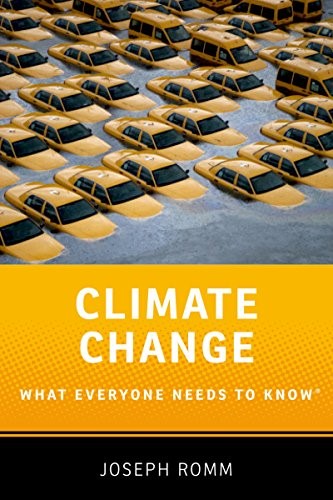A Personal Canon: Joshua Shannon on Five Influential Texts
My personal canon, especially in the world’s current political climate, cannot possibly belong to single field. The most important books for me now are calls from several corners of intellectual life, reminders of the urgency and possibilities of scholarship. They are all critical and humanizing. They remind me of the project of civilization and of the fragile efforts that we can bring to it. I offer here, then, five books that help form the foundation of my work right now. Some of them are books I have known for decades; others are new to me. All of them give me hope.
Fredric Jameson, Postmodernism, Or, the Cultural Logic of Late Capitalism (Durham, N.C.: Duke University Press, 1991)

I encountered Jameson’s great book early in graduate school, where it made a searing impression. The indelible premise, which Jameson first laid out in a 1984 essay (based in turn on his readings of Karl Marx and the Frankfurt School of cultural critics), is that contemporary culture, in all its variety, is above all the product of recent developments in the history of capitalism. And even though few words in the humanities are more out of fashion now than “postmodernism,” this books remains an apt guide for the present. The well-known section analyzing the confusing architecture of the Bonaventure hotel in Los Angeles (where in the meantime countless academic conferences have taken place) is a call to arms. Most of culture serves to hide power and make it seem natural. The role of the critical scholar, then, is to read that culture closely for its “cognitive map” of the obscured workings of injustice.
T. J. Clark, The Painting of Modern Life: Paris in the Art of Monet and His Followers (New York: Knopf, 1984)

T. J. Clark’s book on impressionism was just about the first book I read in art history, the field that has since become my profession. Decades later, I still assign this book to students. Clark, writing at the same moment as Jameson, insists on a deep, structural relationship between artworks and their world. Impressionism’s famous irresolution and “flatness” are not stylistic withdrawals from realism—on the contrary, they are precisely a means of representing the illegibility and the surface-orientation of modern life itself. Art, that is, is most revealing about social reality not because of what it represents but rather because of the forms in which it makes those representations. Form is not the opposite of politics but rather the very essence of our (largely invisible) political consciousness.
Linda Nochlin, Women, Art, and Power and Other Essays (New York: Harper & Row, 1988)

Linda Nochlin’s essay “Why Have There Been No Great Women Artists?,” first published in 1971 and continually anthologized since, remains for me the startling intervention of her career, and of her volume of essays Women, Art, and Power, and Other Essays (1988). The most radical claim in this early text—though the point was made more elaborately by other poststructuralist feminists later—is that inequality in the art world is not just the result of exclusion. The problem is inherent in our very idea of art and its reliance on the “myth,” as she writes it, “of the Great Artist.” If we are to make culture (and society) more just, we cannot simply dismantle barriers. We must rebuild our idea of what art is, unmasking the fact that “the presumably neutral ‘one’” is “in reality the white-male-position-accepted-as-natural.” This point seems as fresh today as ever, as Americans are discovering that white supremacy is not just the explicit practice of hatred but also the thoughtless habit of well-intentioned committees across all our institutions.
Joseph Romm, Climate Change: What Everyone Needs to Know (Oxford: Oxford University Press, 2015)

The humanities are now, thank goodness, preoccupied with the environment. But the scholarly discussion of culture and climate remains badly impoverished by our collective weakness in the basic facts. Joseph Romm’s Climate Change: What Everyone Needs to Know is an astonishingly handy, readable, and measured introduction to the climate emergency. Reading it, I felt awash with gratitude for its grounding effects. Climate change of course feels apocalyptic, but addressing it—which, as Romm points out, we will do, either well or poorly—is largely a practical matter. Our planet is now a little more than 1°c warmer than it was before industrialization; the atmosphere contains about 407 parts of CO2 per million, or about 57 parts more than is sustainable. The biological and social effects of these figures, and how their progression can be slowed or even reversed—these are the difficult matters that Romm demystifies so ably. As I do my own ecocritical research, I find it invaluable to view modernity’s unsustainability not just as an epochal moral failure but also as practical problem to be solved.
John Williams, Stoner (New York: Viking, 1965)

Stoner, a fifty-year-old novel (which I, following many others, only recently discovered), is a bitter story. On the first page, John Williams tells us flatly in advance that the protagonist, English-literature professor William Stoner, was little esteemed and hardly remembered after his death. As the reader is cued to fear, the story of Stoner’s life, then recounted in a strict chronology up to his death, turns out to be a chain of mediocrities. He manages a joyless marriage, unsuccessful parenting, and forgettable professional achievements. Williams draws a cuttingly precise depiction, too, of Stoner’s academic department unfolding into cruel pettiness. But I experienced this novel as encouragement. Stoner’s life is a life after all, with the wonder and passion that belong to that impermanent state. As he dies, his ordinariness is quite enough.
Joshua Shannon is Terra Professor of American Art, 2019-20 at the JFK Institute of North American Studies at the Freie Universität Berlin. He is also Professor of Contemporary Art History and Theory, Department of Art History & Archaeology and Director, The Potomac Center for the Study of Modernity at the University of Maryland. He is the author of The Recording Machine: Art and Fact During the Cold War and The Disappearance of Objects: New York Art and the Rise of the Postmodern City.

























